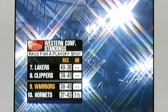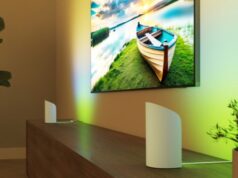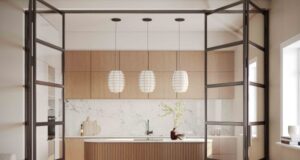
The ratio between the height and the width of a video image is called the ‘aspect ratio’. Learn more about different aspect ratios, why they exist and when they’re likely to matter.

If you’re watching TV and you find that the actors are too short, tall or bloated than appears physically possible then it’s quite likely that you’re having problems with your aspect ratio. This can be impacted by the source of the TV, such as a VHS or DVD player, and can be easily managed with a little visual compromise.
What is aspect ratio?
Aspect ratio refers to the proportions displayed on your television screen. The typical standard ratio seen in older or CRT TVs is 4:3, while HDTV now operates to a widescreen ratio of 16:9.
In both cases, the first number represents the width of the screen by the height, so for every 16 inches of horizontal screen, there will be 9 inches of vertical viewing.
Aspect ratio works best when you are sourcing from a device that has the same aspect ratio as your TV, although there are ways to watch TV without all those podgy celebrities.
Why is aspect ratio important?
Aspect ratio determines the visual proportions of your screen, and is important in displaying a true sized image.
In cases where you are sourcing this from a smaller ratio, you may experience your picture in a black block, or with black bars around the screen. This will display your picture in the appropriate proportions by blacking out the remainder of the screen.
But be warned, black bars around your screen can attribute to the image becoming burned in if you own a Plasma TV.
How does the source affect the aspect ratio?
Similar to resolution, you will have the best quality picture when the ratio of the device you are sourcing is the same as the ratio of your TV screen.
Some sources will have an aspect ratio control, and allow you to set the ratio to your taste. However, if this is not the case, you will need to make some compromises about how you view the content.
If, for example, you are running a 4:3 aspect ratio on a 16:9 ratio screen, you have three options to view the image.
- Pillarboxing – the visual remains in its 4:3 aspect ratio with a black box around the visual, displaying the picture in its original format
- Expanding – you expand the image to fit the 16:9 ratio, distorting the content horizontally
- Zooming – you zoom in on the image so the whole screen is filled, cutting off the top and bottom of the picture
Either way, if you’re operating a 4:3 aspect ratio on a 16:9 ratio screen, you’re going to have to make some compromises. But this doesn’t mean that you still can’t watch all types of programs on the one screen.





